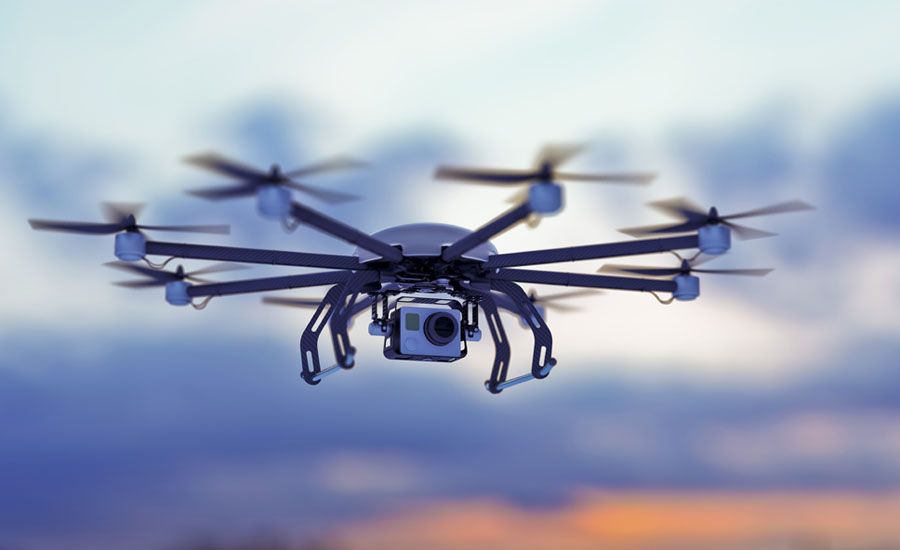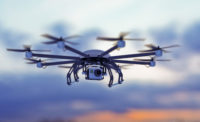Drone operators must stay away from U.S. Navy vessels, take an aeronautical knowledge test and obey new procedures for flying their Unmanned Aircraft Systems (UAS) near airports, under a new round of restrictions just announced by the Federal Aviation Administration (FAA).
The “special security instructions” issued by the FAA restrict drone operations in airspace up to 2,000 feet mean sea level (MSL) near U.S. territorial and navigable waters. These new restrictions specifically prohibit drone flights in this airspace within a stand-off distance of 3,000 feet laterally and 1,000 feet above any U.S. Navy vessel.
A potential security threat to U.S. vessels
Because they may pose a safety or security threat to protected U.S. Navy vessels, violators could face civil penalties and criminal charges and their drones could be seized and destroyed.
The restrictions are detailed in Notice to Airmen (NOTAM), and can be found at the UAS Data Display System (UDDS) website. Unmanned Aircraft System (UAS) operators are urged to familiarize themselves with these NOTAMs and to go to UDDS to help them comply with these FAA restrictions, which are put in place to support the nation’s security. UDDS provides precise descriptions of the airspace to which these restrictions are applied, procedures to access this airspace, an interactive map, downloadable geospatial data and other crucial information and tools for UAS operators. A link to these restrictions is also included in the FAA’s B4UFLY mobile app.
Additional drone-specific requests by federal security agencies are under consideration.
Airport airspace rules
Reactional drone flyers may continue to fly below 400 feet in uncontrolled airspace without specific certification or operating authority from the FAA, but they are now required to obtain prior authorization from the FAA before flying in controlled airspace around airports. Furthermore, they must comply with all airspace restrictions and prohibitions when flying in controlled and uncontrolled airspace.
The new requirement to obtain an airspace authorization prior to flying a drone in controlled airspace replaces the old requirement to notify the airport operator and the airport air traffic control tower prior to flying within five miles of an airport.
Until further notice, air traffic control facilities will no longer accept requests to operate recreational drones in controlled airspace on a case-by-case basis. Instead, to enable operations under the congressionally-mandated exception for limited recreational drone operations, the FAA is granting temporary airspace authorizations to fly in certain “fixed sites” in controlled airspace throughout the country. The fixed sites (MS Excel) are listed online and will be routinely updated.
The sites are also shown as blue dots on Unmanned Aircraft Systems Facility Maps. The maps depict the maximum altitude above ground level at which a drone may be flown safely for each location in controlled airspace.
In the future, recreational flyers will be able to obtain authorization from the FAA to fly in controlled airspace. The FAA currently has a system called the Low Altitude Authorization and Notification Capability (LAANC), which is available to non-recreational pilots who operate under the FAA’s small drone rule (PDF) (Part 107). The FAA is upgrading LAANC to allow recreational flyers to use the system. For now, however, recreational flyers who want to operate in controlled airspace may only do so at the fixed sites.
Tested on aeronautical knowledge and safety
Another new provision in the 2018 Act requires recreational flyers to pass an aeronautical knowledge and safety test. They must maintain proof that they passed, and make it available to the FAA or law enforcement upon request. The FAA is currently developing a training module and test in coordination with the drone community. The test will ensure that recreational flyers have the basic aeronautical knowledge needed to fly safely.
Some requirements have not changed significantly. In addition to being able to fly without FAA authorization below 400 feet in uncontrolled airspace, recreational users must still register their drones, fly within visual line-of-sight, avoid other aircraft at all times, and be responsible for complying with all FAA airspace restrictions and prohibitions.
Additionally, recreational flyers can continue to fly without obtaining a remote pilot certificate provided they meet the eight statutory conditions of Section 349 of the Act, which are described in a Federal Register notice.
If recreational flyers do not meet any of the conditions, they could choose to operate under Part 107 with a remote pilot certification. Drone operators who fail to comply with the appropriate operating authority may be subject to FAA enforcement action.
Furthermore, flying a drone carelessly or recklessly may also result in FAA enforcement action.
The FAA will help recreational flyers learn and understand the changes by posting updates and additional guidance, including regulatory changes, on the FAA website.
If you are thinking about buying a drone, the FAA can help you get started with registration and important safety information.




